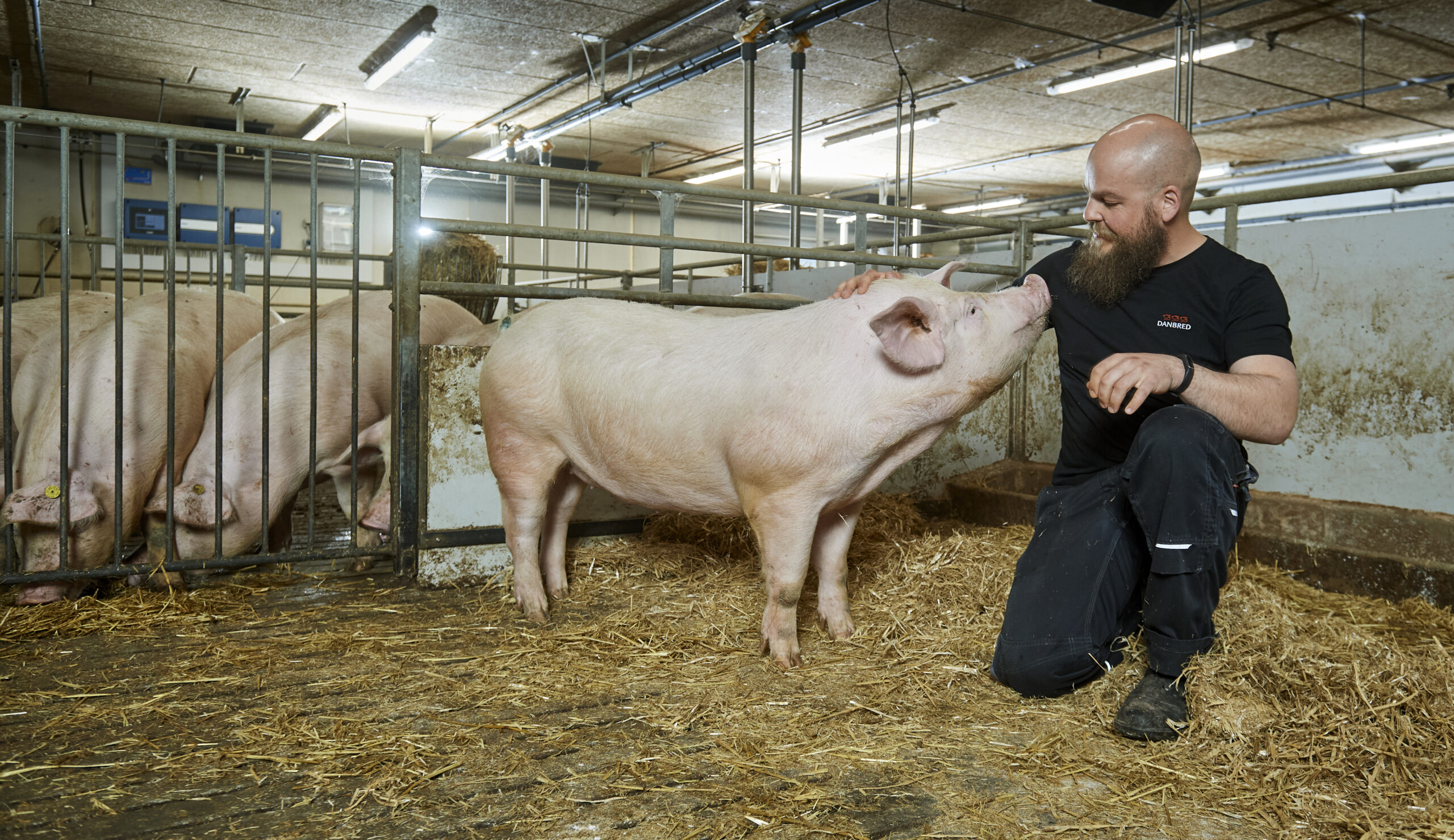Sustainable breeding strikes a balance between realising the genetic gain and reducing the harmful effects of inbreeding. As selection becomes more intense, and only the very best animals are selected as parents of the next generation, breeding animals will become more related and thus more inbred. DanBred uses the state-of-the-art method of selection – optimum-contribution selection – to maximise genetic gain while controlling the rate of inbreeding.
In DanBred, we are highly effective at using genetic selection to realise the genetic gain and increase the genetic potential of pigs – in order to deliver high performance results for your pig production. Our customers get access to the breeding system through a Nucleus Management agreement as an extension to GenePro, which helps you safely identify the best animals for breeding. However, while selection is a powerful tool that has increased the genetic potential of animals, these gains come with a cost: inbreeding.
Clearly, breeders face a dilemma between realising the genetic gain and controlling inbreeding. The appeal of genetic gains is driven by global competition between breeding companies, which can make it tempting to ignore the harmful effects of inbreeding – and select only the very best animals as parents. This temptation is merely amplified by the fact that genetic gain from selection is often seen from the first generation, whereas the harmful effects of inbreeding take time to accumulate and do not become a problem until future generations. Nevertheless, if you want your breeding program to be responsible, sustainable, and profitable long term, you need to aim for the right balance between realising genetic gains and reducing the harmful effects of inbreeding. Using advanced technology, DanBred can help you select the best breeding pigs to gain breeding progress while controlling the inbreeding.
Inbreeding and its consequences
Inbreeding is a natural and inevitable phenomenon in animal populations. Inbreeding occurs when offspring are produced by mating related individuals, i.e. individuals that have a common ancestor(s).The more related the individuals, the more inbreeding.
This is harmful to your breeding program because: – It causes inbreeding depression, which reduces an animal’s production performance, health, and welfare – It causes losses in genetic variation in a population, which reduces the potential of realising future genetic gains
In its most extreme form, inbreeding can lead to the demise of animal breeds. |
|---|
Rate of inbreeding
Inbreeding occurs when the two versions of a gene inherited by an offspring from its parents are copies of the same gene from an ancestor. These offspring are identical-by-descent (IBD) for that specific gene. The inbreeding coefficient of an individual animal is the proportion of its genes that are IBD.
However, the inbreeding coefficient of an individual animal is not the most critical inbreeding parameter for an animal population. What is even more important is the rate at which the inbreeding coefficients of individuals in a population increase over generations. This is known as the rate of inbreeding for a population – and it is directly related to the harmful effects of inbreeding. Consequently, controlling the rate of inbreeding is key to reducing the harmful effects of inbreeding.
Accurate estimates of the rate of inbreeding
If it were possible to observe all the genes along the DNA of all the pigs in a population, we would know each pig’s true inbreeding coefficient and the rate of true inbreeding in the population. Unfortunately, that is not possible. Without accurate estimators for the rates of true inbreeding, it is challenging to control it. Therefore, DanBred is determined to develop observable and accurate estimators of rates of true inbreeding – and make this a central part of our breeding program.
The rates of true inbreeding can be estimated using either pedigree or genomic information. Pedigree information always underestimates rates of true inbreeding, whereas genomic information tends to overestimate them.
Striking the right balance
DanBred uses optimum-contribution selection (OCS) to select boars in its breeding program for DanBred Duroc, but we are also working to implement it in DanBred Landrace and DanBred Yorkshire. OCS is a state-of-the-art method of selection because it maximises genetic gain at acceptable rates of inbreeding. One of the benefits of OCS is that it can optimise genetic contributions when different sources of information are used – to predict genetic gain and control rates of inbreeding. The genetic gain is predicted using DanBred’s breeding values, which are estimated using genomic information, also referred to as genomic selection. Rates of inbreeding can be controlled using OCS with pedigree information or genomic information (POCS or GOCS).
DanBred uses POCS to control inbreeding for DanBred Duroc. When POCS and GOCS are compared at the same rate of true inbreeding in simulated data, POCS always realises more genetic gain than GOCS. This may seem counterintuitive at first, as genomic information is more accurate than pedigree information. But POCS realises more genetic gain than GOCS because it allows selection to increase the number of favourable genes in a population more than GOCS does. Therefore, there is currently more incentive to use POCS in DanBred’s breeding program, nevertheless, that does not rule out the possibility of using GOCS in future. There is still a lot to learn before we can use genomic information to control rates of inbreeding, but DanBred is working towards methods that improve GOCS so that it realises more genetic gain than POCS at acceptable rates of inbreeding.
Deduced version of an article originally written by Mark Henryon, Senior Scientist at SEGES Pig Research Centre, Christian Sørensen, Senior Scientist at SEGES Pig Research Centre, and Lizette Vestergaard Pedersen, Senior Consultant at SEGES Pig Research Centre, and published in International Pig Topics.










